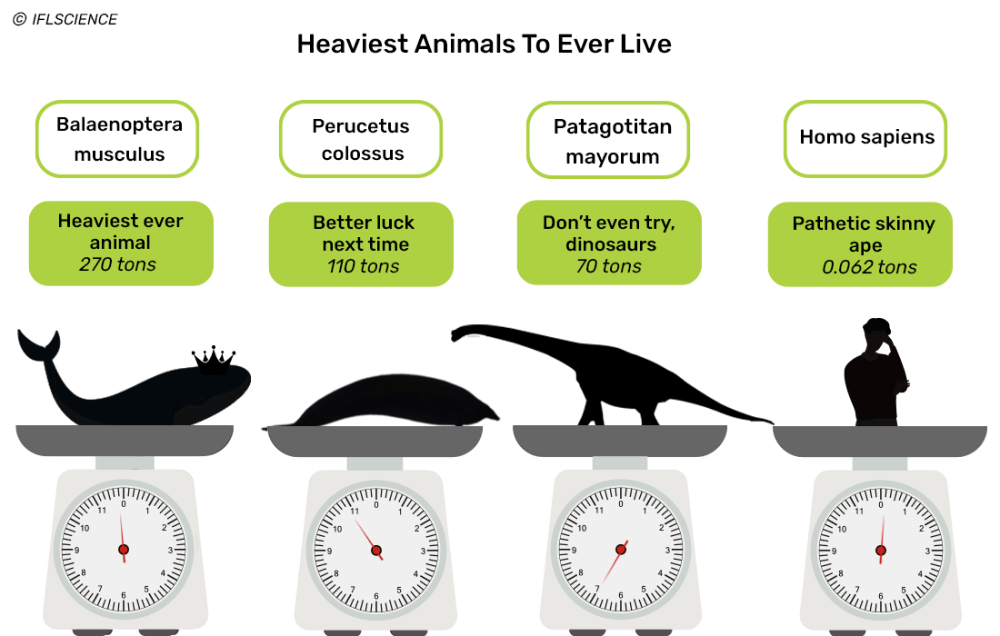The blue whale was knocked off the top spot for the heaviest animal ever to live on Earth back in 2023, but now, the almighty slab is back reigning supreme thanks to a brand new study. It argues that the recent claim the ~39-million-year-old Perucetus colossus – an ancient whale – was heavier than the blue whale is false, putting ol’ Balaenoptera musculus back on top.
Gigantism became a big hit with mammals when they returned to the ocean, which is why we see so many absolute units among the cetaceans, a suborder of mammals that includes dolphins, whales, and porpoises. None have taken it quite so far as the blue whale that can reach 270 metric tons and is as long as three school buses.
Last year, researchers working on the discovery of a 39 million-year-old fossil of the ancient whale Perucetus colossus were able to retrieve 13 vertebrae, four ribs, and one hip bone, from a site in Southern Peru. It might not sound like much, but it was enough for them to predict that in life, P. colossus’s skeletal weight would’ve been two to three times that of extant blue whales’ skeletons.
P. colossus was considerably shorter than a blue whale at 17 meters (56 feet) long, compared to around 30 meters (98 feet). What made the researchers of the original paper estimate its weight to be so great is its unusually dense bones that may have evolved as an adaptation to help it maintain neutral buoyancy in the water, sort of like a hippo.
It’s here that the authors of a new paper refute that claim, stating that such a weight just wouldn’t have vibed with P. collosus’s lifestyle.
“It would have been a job for the whale to stay at the surface, or even to leave the sea bottom – it would have required continuous swimming against the gravity to do anything in the water,” said Professor Ryosuke Motani, a paleobiologist at the UC Davis Department of Earth and Planetary Sciences, in a statement.
Joined by Nick Pyenson at the Smithsonian Institute National Museum of Natural History, Motani reassessed the assumptions that led to P. collosus’s chonky weight estimation. Together, they identified two key areas that left room for error.

Behold, the whale scales.
Image Credit: Alberto Gennari and GoodStudio/MrVettore/BATKA/Mischoko/EreborMountain/Shutterstock created by IFLScience
One key area was how the weight of the total skeleton was used to scale increasing body size, which they say doesn’t match up to the patterns of growth vs. skeletal weight we see in extant animals. The second centered around how they may have overestimated body mass based on P. colossus’s extremely thickened bones, a trait known as pachyosteosclerosis. Manatees also have pachyosteosclerosis, but they exhibit comparatively light bodies compared to their skeletons.
“The new weight allows the whale to come to the surface and stay there while breathing and recovering from a dive, like most whales do,” Motani concluded.
It remains difficult to pin down an exact weight, something that would be helped along by the discovery of some P. colossus teeth that could tell us what it ate, and give some indication of its potential to get swol. So, if you want to do your bit for whale scale science, why not get out there and find some?
The study is published in PeerJ.
Source Link: Blue Whale Back On Top As Heaviest Animal Ever To Live On Planet Earth